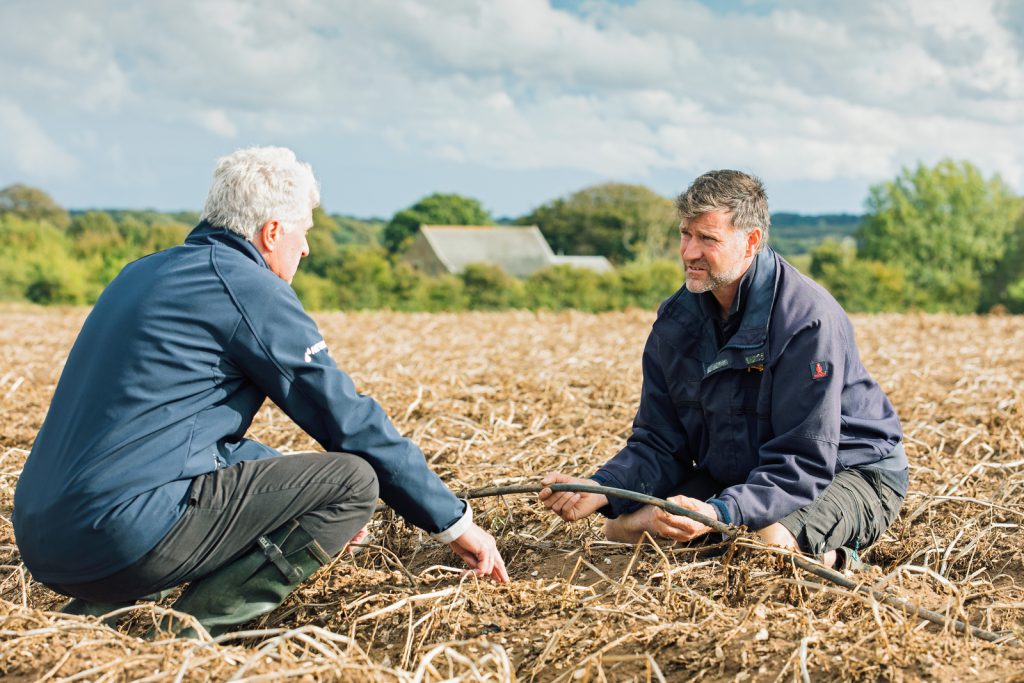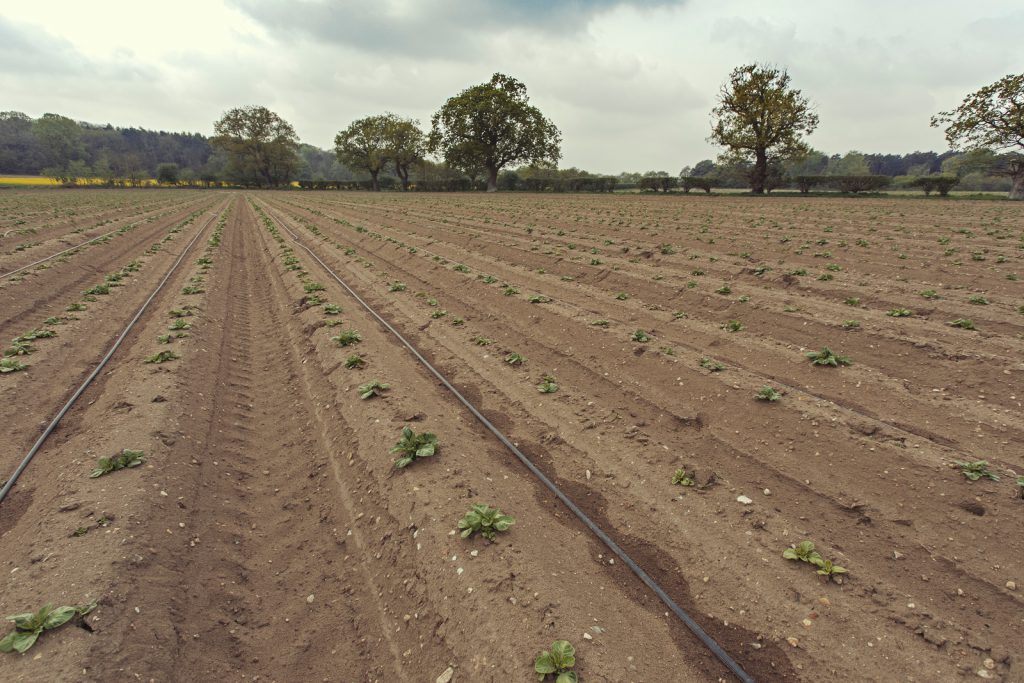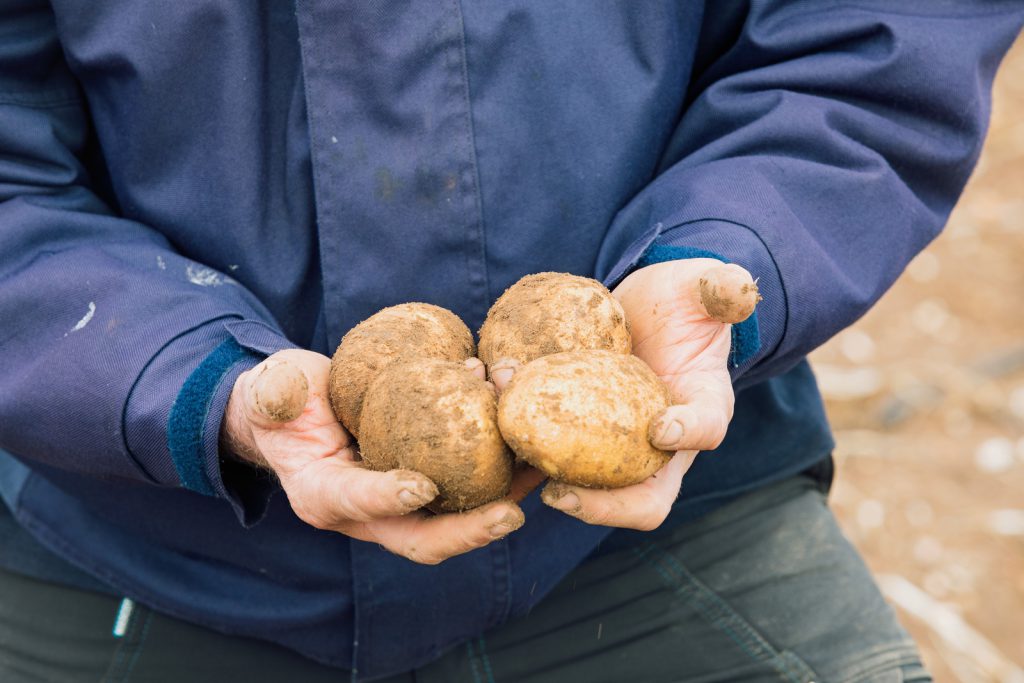Whether farmers produce potatoes for fresh consumption or for processing, the challenge of consistent shape and high yield is intense. With precision irrigation, each hectare generates up to 20% more potatoes and fosters consistent quality.

Why choose precision irrigation for your potatoes?
- Satisfy all market segments
Every market hosts unique demands; fresh requires superb appearance, high cooking quality and even shape. Processed insists on low reducing sugar concentrations, uniform tuber, and consistent dry meter. Whatever your goal, precision irrigation will get you there. - Keep your potatoes healthy
Drip irrigation delivers water precisely to the roots, avoiding leaf moisture, and ultimately fostering a dry environment. Less moisture reduces the risk of potato blight and other fungal diseases. - Take control of plant nutrition
Potatoes are heavy feeders; their root system is shallow and fibrous so they only flourish with consistent nutrition. Precision fertigation brings nutrients directly to the root zone, on demand. - Optimize your resources
Drip irrigation distributes your water and nutrients only where the crops grow, avoiding waste between the beds. In addition, there is no water loss due to runoff or evaporation. - Foster Uniformity
Uniform distribution of water and nutrients creates uniform tubers across the field. Even in the face of strong winds, challenging topography, inconsistent row length or odd field shape, drip irrigation delivers consistency.

Things we often get asked:
Can my potatoes be irrigated remotely?
Yes. Precision irrigation is easily combined with remote control and automation to make your irrigation more efficient, giving you immediate access from your cell phone, tablet or computer. Read more about digital farming.
Why should I use drip irrigation over other irrigation methods?
To produce high quality potatoes, nutrients must be applied efficiently directly to the roots. Sprinklers and moving irrigation machines distribute water and fertilizer generically, wasting any resource that lands further than 25 cm from the mother tuber.
Phosphorus application – tubers need soluble phosphorus to grow, but phosphorus has low mobility and solubility within the soil. Therefore, when using precision fertigation, you can apply consistent small doses to the active root zone, boosting phosphorus uptake.
Calcium application- tubers absorb Ca directly from their surface. By providing constant Ca to the crop via drip irrigation, you optimize absorption efficiency.
How can drip irrigation decrees leaf diseases?
Many diseases, like potato blight, are exacerbated by high humidity. Drip irrigation maintains relatively low humidity in the canopy since the roots are watered, not the leaves.
How much water can be saved when switching to drip?
Drip irrigation reduces water consumption by 15-30% over sprinklers.
Can I irrigate my potatoes with saline water?
If you want to grow potatoes using saline water, even up to an EC of 3.5ds/m, drip irrigation is your only option. Using other irrigation methods can cause leaf burns and yield loss.
What are the benefits of drip irrigation for the potato seeds market?
Using drip irrigation ensures you’ll grow high quality, consistently sized tubers, positioning you to provide the market with the best planting material.
How do I deploy and collect the drip lines from my field?
Deployment and collection of drip lines can be easily accomplished with our agro-machinery solutions especially designed for potato crops. Contact us for more details.


